Apple's HomePod is finally available to preorder this Friday, January 26th, and arriving in stores starting Friday, February 9th. AppleInsider delves into the device pre-release, and tells you everything you need to know before you drop $349 on it.
The HomePod is Apple's iteration of a smart home speaker, made to compete with Amazon's Echo and Google's Home speakers. The only difference is that it carries a much higher price tag than the starting prices from Amazon or Google.
While some critics contend that Apple is late to the game, fans should also remember that you don't have to be first to win. The first iPod was far from the first MP3 player on the market, and smartphones existed long before the iPhone. Even Apple's AirPods, which are still a huge success, came after other wireless headphones were available.
With a $350 price tag, Apple has to justify the HomePod coming in at a cost much higher than the competition. So what will your hard-earned money get you?
Audio quality
Apple says the HomePod speaker quality should blow the smart home speaker competition out of the water, particularly cheap alternatives from Google and Amazon.
HomePod has an array of seven tweeters, each with their own individual drivers, custom amplifiers and transducers. Each tweeter comes custom-designed with a precision acoustic horn that directionally focuses sound.
For comparison, the $130 Google Home has a single speaker, with Amazon's $100 Echo having two speakers. The $50-and-under Echo Dot also has just the single speaker in a very small space.
Unless you opt for Google's high-end $400 Home Max speaker, the competition doesn't feature any subwoofers.
The HomePod also has advanced sensors that analyze the space, so the speaker knows when it's next to a wall or in a corner. The device then uses audio beam-forming to focus the sound towards the center of the room while minimizing sound projected towards any walls.
Vocals and direct sound can be beamed them to the middle of the room, or bounced off the walls to create an ambient audio feel. It can even create stereo sound by splitting audio channels between the multiple tweeters. Later this year, you'll be able to add another HomePod in the same room and they'll automatically detect each other to create true stereo sound, while tuning their audio to project towards the center of the room instead of towards each other.
The HomePod also gets a dedicated high-excursion subwoofer, which means the woofer diaphragm has high travel of 20mm, which Apple says is remarkable for a woofer that size. Higher travel means more air is being moved, creating more bass.
The subwoofer is four inches, which, on its own, is larger than the entire Amazon Echo Dot.
The HomePod even has a built-in low-frequency calibration microphone that listens to the bass, so the smart speaker can automatically tune and correct it. Because of this, Apple has greatly reduced or eliminated distortion, which is common with subwoofers.
Physical presence
The HomePod comes in either White or Space Gray color options, but the Space Gray is closer to black than gray. In terms of size, the speaker is 6.8 inches tall and 5.6 inches wide. For comparison, a standard bottle of water is 8 inches tall, and Amazon's Echo is 9.3 inches tall.
An acoustic mesh fabric is used to wrap the HomePod, which Apple says helps the HomePod's impressive six microphones do a better job of hearing your commands from across the room, even when loud music is playing. The HomePod's competition, meanwhile, have microphones packed onto circuit boards instead of freely isolated near the outside of the device.
Beefy processor
The HomePod is controlled by Apple's Apple's A8 processor, the same chip found in the iPhone 6 and 6 Plus.
While it may seem like the A8 processor is overkill for the HomePod, the CPU is in charge of quite a bit of tech, like real-time software modeling of the woofer mechanics, upmixing of both direct and ambient audio, real-time buffering, audio beam-forming, and multi-channel echo cancellation.
The A8 is also in charge of Siri, which works with "Hey Siri" and can be used to do anything from checking the weather, converting units of measurements, playing a podcast, checking nearby traffic, setting a timer or reminder, and even sending a text message.
In contrast, an iFixit teardown revealed that the Google Home's processor, flash memory, and RAM are the exact same chips found in the second-generation Chromecast, a product that sells for just $35.
Setup and connectivity
Setting up the HomePod will be easy — simply plug it in and your iOS device will detect it, as long as it's one of the devices on this list running iOS 11.2.5 or later.
The HomePod supports the latest and greatest Bluetooth 5.0, as well as 802.11AC Wi-Fi with MIMO technology, which uses multiple transmitters and receivers to transfer more data at the same time.
Newly discussed, users can use the wireless connectivity of the HomePod to hand off a phone call on an iPhone to the HomePod for hands-free conversations. It doesn't appear at this time that the HomePod can "ring" to alert you of a call, but after answering on an iPhone, the call can be routed to the HomePod.
When AirPlay 2 is released, you'll be able to have HomePods in multiple rooms, and they'll communicate with each other so they can either sync and play the same music together. They'll also play different songs in different rooms, all controlled through HomeKit.
HomePod also works with HomeKit, letting users ask Siri to turn on the lights, set the thermostat, turn on the sprinklers, or any other task compatible with Apple's smart home platform.
Critics contend that Siri is far behind competing voice assistants like Amazon's Alexa. But, Apple has packed the HomePod with future-proofed hardware that will support years and years of updated software, giving Siri plenty of room to grow.
Controlling the HomePod manually
For those who don't want voice control, or can't use it, the HomePod also comes with a touch-screen display right on top of the device.
Tapping or holding plus or minus icons on the screen will adjust the volume. Users can also tap the center to play and pause, double-tap to skip to the next track, and triple-tap to go back to the previous track.
The screen also lets users also touch and hold the center to talk to Siri. You'll know Siri is listening by the LED waveform that animates with your every word.
Playing music
The HomePod is built with the Apple Music subscription service in mind, unlocking access to over 45 million streaming songs. Siri can add songs to a playlist, or save a list of liked songs. Over time Apple Music will learn your taste in music and fine-tune what it plays for you.
If you don't have Apple Music yet, you can start a free three-month trial and cancel anytime. If you enjoy it, pricing is $10 a month for an individual plan, $15 for a family plan, and $5 for a college student.
However, a subscription to Apple Music isn't required, so you can still stream music from your iTunes music library. You can also stream music from any app that supports AirPlay, like Spotify or Pandora for example, though those services won't offer convenient Siri integration at launch.
The HomePod also supports a wide variety of audio formats, including MP3 and WAV.
Been here before...
This obviously isn't Apple's first go-around with high-quality audio. In 2006, Apple released the iPod Hi-Fi. It wasn't well received at the time, was considered too pricey for what it delivered, and was discontinued in 2007. It was certainly slain for good with the advent of the Lightning connector. Right now, a decade later, we don't know for sure if Apple learned any lessons from that.
But, our early impressions are good. We've had one shot already at listening to the HomePod when it was announced at the 2017 WWDC, but we won't know how Apple's $349 HomePod will perform in the real world until we get our hands on one.
 AppleInsider Staff
AppleInsider Staff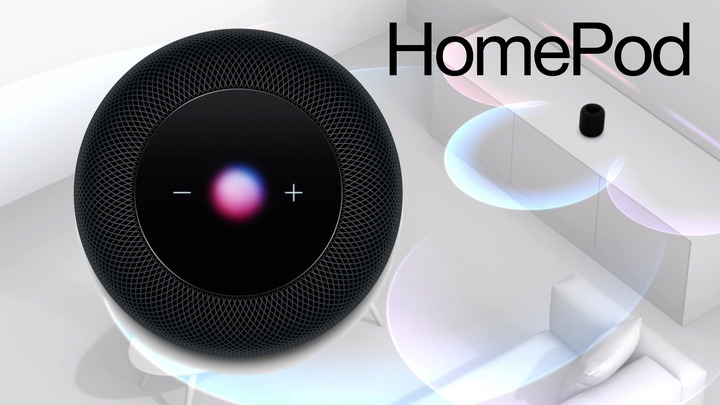
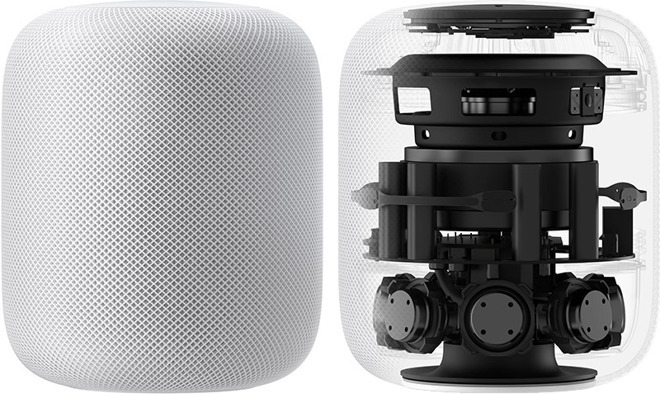
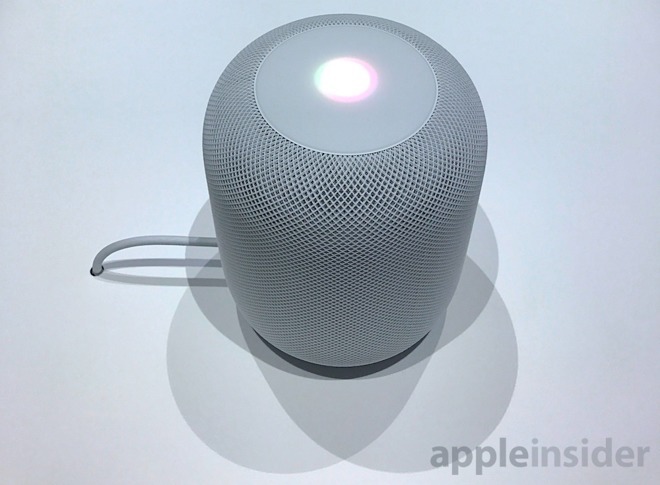
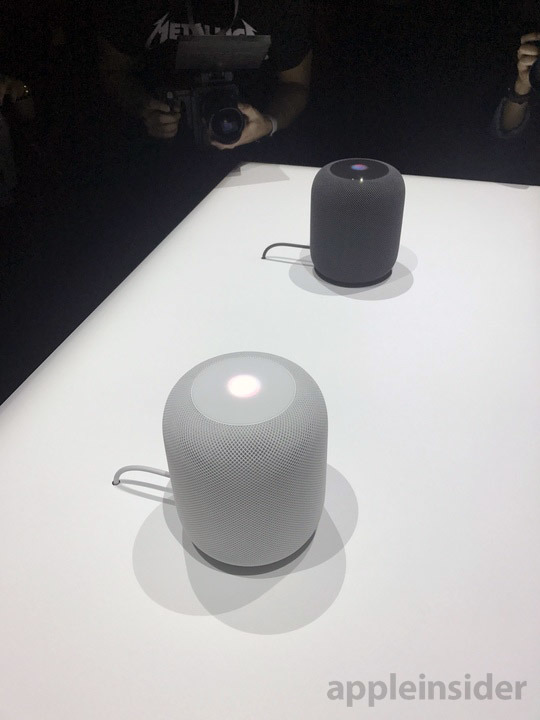








-m.jpg)






 Charles Martin
Charles Martin
 Christine McKee
Christine McKee
 Wesley Hilliard
Wesley Hilliard
 Malcolm Owen
Malcolm Owen
 Andrew Orr
Andrew Orr
 William Gallagher
William Gallagher
 Sponsored Content
Sponsored Content
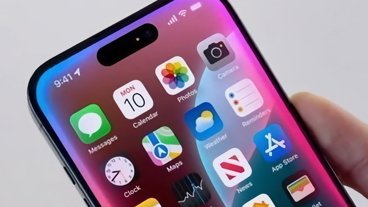

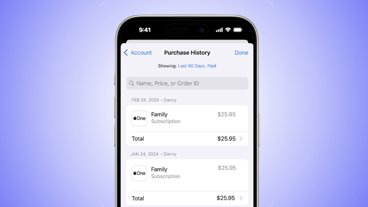





52 Comments
The biggest thing many want to know is if this can work as a home theater system. Can it? Will the sound match competing systems? Will it work with an Apple TV? When?
Although it's very exciting, I'm leery about buying anything with processors that have the Meltdown/Spectre bugs. Should I wait?
4” “subwoofer”